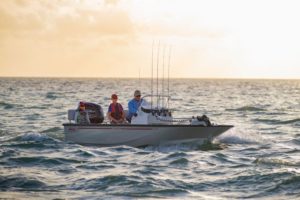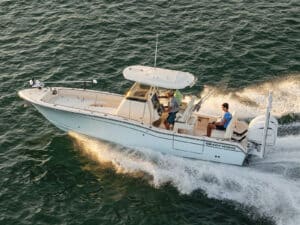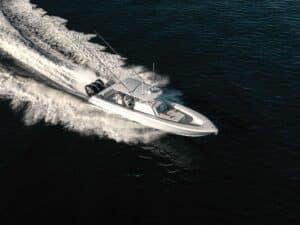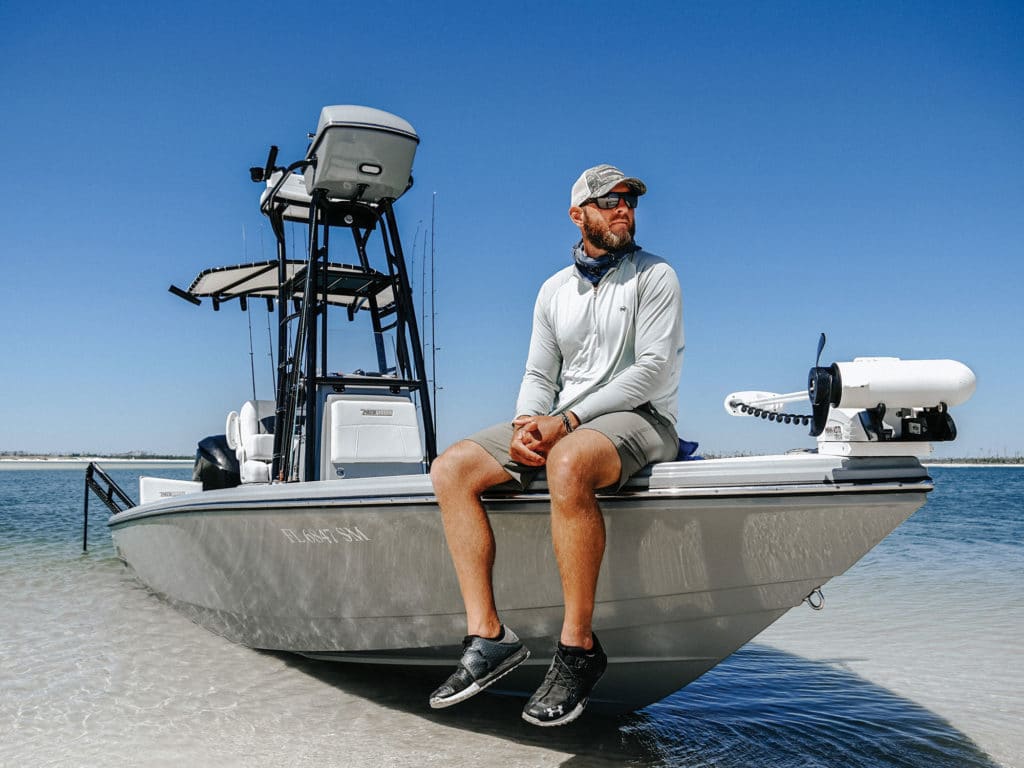
Anglers who want to fish big water one day and backwater bays the next will be served best by a hybrid bay boat. Hybrid bay boats run larger, from 24 to 28 feet, giving them the length needed to safely navigate rough seas. Some hybrids are also outfitted with upper stations.
Deadrise at the transom is usually steeper than a flats skiff or smaller bay boat, clocking in around 15 or so degrees to smooth turbulent waters.
While that means sacrificing a couple of added inches of draft, it boosts the seakeeping abilities.
Hybrids also tend to have more range thanks to larger powerplants and gas tanks, and feature larger fish boxes that can handle even large offshore species. That opens the door to switch from pelagics and bottomfish to specks and snook.
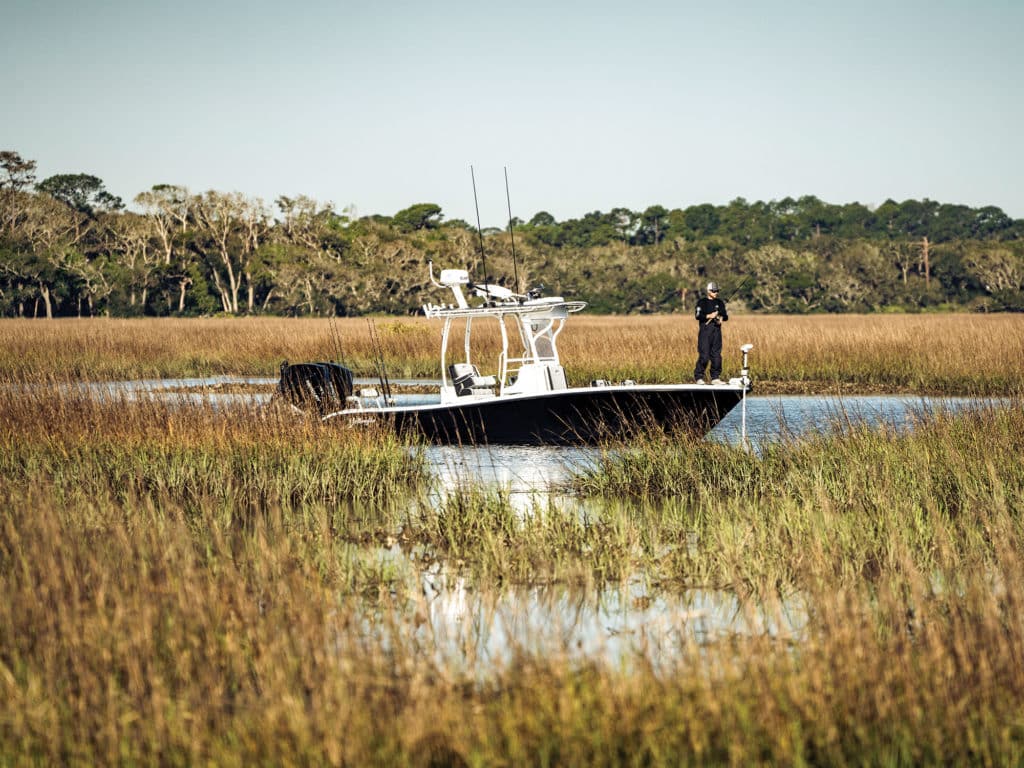
Big Picture
Most hybrid bay boats, such as Skeeter’s 2550 or Grady-White’s 251 CE, have elevated casting platforms at the bow and stern. And because they’re intended to allow for long offshore fishing days, most have the added protection of a T-top. Many also integrate family-friendly features such as extra seating in the foredeck, freshwater transom showers, and large console head compartments. These creature comforts make even extended trips fun for everyone.
Livewells
The more livewells, the merrier. Regional fishing tactics might still vary some, but live-baiting practice has migrated farther north from its Florida epicenter year by year. So bay boats usually offer at least one livewell, with options for two or more. Often the third is a crustacean well, which is smaller and shallower for shrimp or crabs.
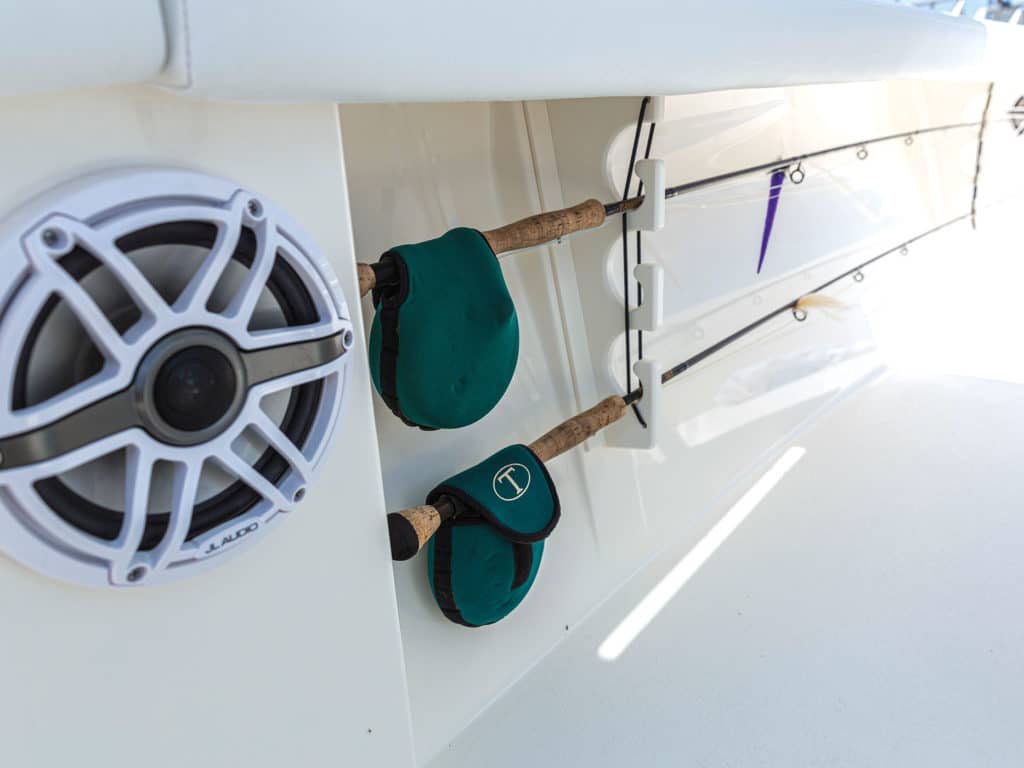
Rod Stowage
You want to have enough rod storage for multiple pursuits to take advantage of these boats’ flexible personalities. Look for vessels outfitted with large, lockable rod lockers in the foredeck, long enough to accommodate up to 9-foot fly rods. Some hybrids will be equipped with rod racks to cradle rods and reels under the gunwales, either as standard equipment or options. Look for ones capable of handling large, offshore rod-and-reel combos. Four to six flush-mount rod holders are generally installed on top of the gunwale, and vertical racks are on either side of the console, leaning post and T-top. Make sure you order your vessel with as many as possible; you can never have enough.
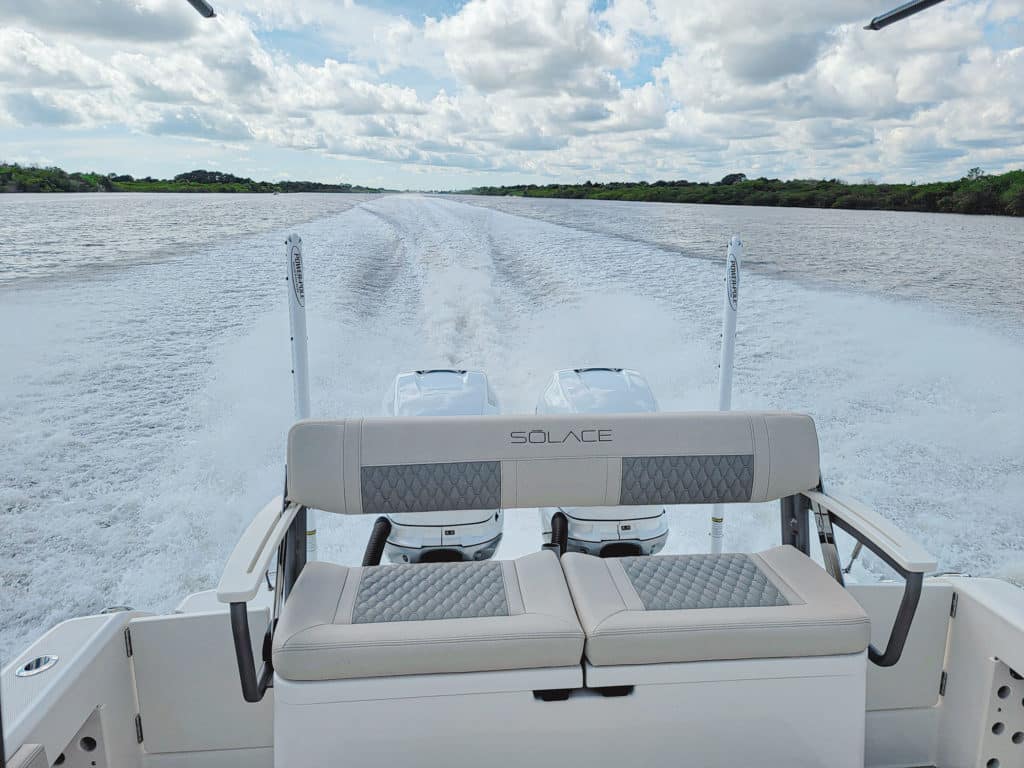
Horsepower
The majority of hybrids are single-engine rigs, but there are a few large models that have twins. In either case, most hybrid bay boats can be loaded with horsepower to provide cruises in the mid-30s to low 40s, with a top end over 50 mph not uncommon.
Opt for max power because larger motors can be run less aggressively to get the performance that would require higher, more-fuel-thirsty throttle settings on smaller motors. You’ll also get better midrange handling from larger, torque-ier models.
Rigging
Electric Trolling Motors: Hybrids should include a bow-mount trolling motor, either factory or dealer installed, to make the most of their shallow drafts. These require 36-volt battery banks with an onboard four-bank battery charger. Lithium-oxide batteries weigh less than half of flooded cell batteries, are often used for added performance. But these require chargers with lithium-friendly charge profiles, so make sure the boat is so equipped.
Electronics: Radar, chirp fish finders and autopilot are must-haves for big-water adventures. Side-scanning sonar is considered critical for many inshore-angling scenarios. In all cases, having multiple MFDs is advantageous.
Pole Anchors: Some anglers consider Power Poles and MinnKota Raptors to be the best way to hold position in shallow water.
Upper Stations: A half-tower with an upper station will prove useful in both offshore and inshore sight-fishing situations.
Editor Says: If you were on a hybrid bay boat in years past and found it a bit too bumpy or wet for your liking, don’t let that experience cloud your judgment regarding today’s boats. Both design and construction have come a long way in the past decade or so, and modern hybrids are far smoother, drier, and more comfortable in a sea than those of yesteryear. -Lenny Rudow, Freelance Writer, Fishing Group
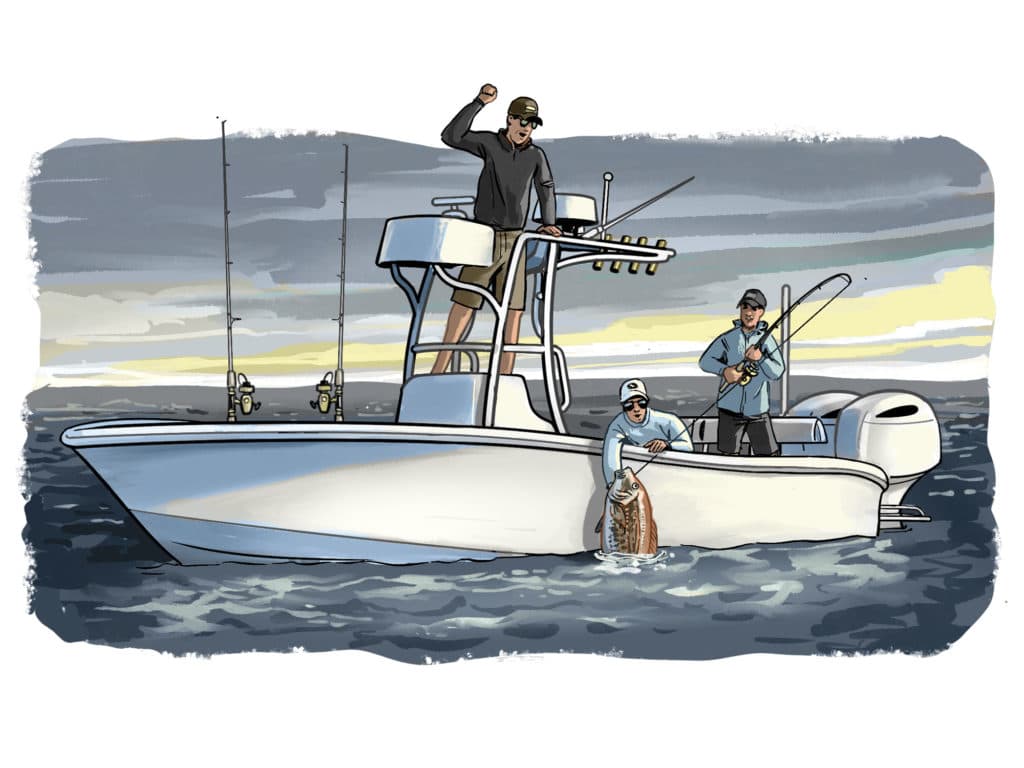
Versatile Vessels In- and Offshore
Hybrid boats bridge the gap between dedicated offshore rigs and smaller inshore boats, allowing anglers to target a variety of species. The twin engines on the vessel above allow those anglers to reach the snapper grounds quickly, and provide peace of mind. But the relatively shallow draft of the boat still permits them to chase snook, redfish, and other shallow-water species on days when the weather isn’t as cooperative. Ample rod holders, like the rocket launchers shown here, let anglers take whatever tackle is needed for both inshore and offshore fishing, so they’ll always have options. Adding a tower improves fish-spotting abilities and creates a well-rounded fishing machine fit for a variety of adventures.
Experts Say
The name of the game here is versatility. Hybrid boats can flats-fish without having to own a flats boat that’s no good offshore. Hybrid boats function well offshore without having to own an offshore boat that doesn’t work at all in the flats. Hybrids also offer all the necessary comforts of a good sandbar boat. —Chad Jaros, Crevalle Boats
A properly designed hybrid bay boat is equal parts inshore and nearshore/offshore boat and gives the angler the ability to choose which arena he or she wants to fish on any given day, with
limited trade-offs. We design our boats so if the weather limits offshore fishing, you can still effectively fish in shallow water. —Charlie Johnson, Pathfinder Boats
Editor Says: Don’t be afraid to go big. The major downside to larger models is increased draft, which cuts into your shallow-water fishing access. But the difference in draft between a 24-foot and a 26-foot model, or between a 26-foot and a 28-foot model, is often just 1 or 2 inches. Offshore, however, 2 more feet of LOA can be a big advantage. -Lenny Rudow, Freelance Writer, Fishing Group

